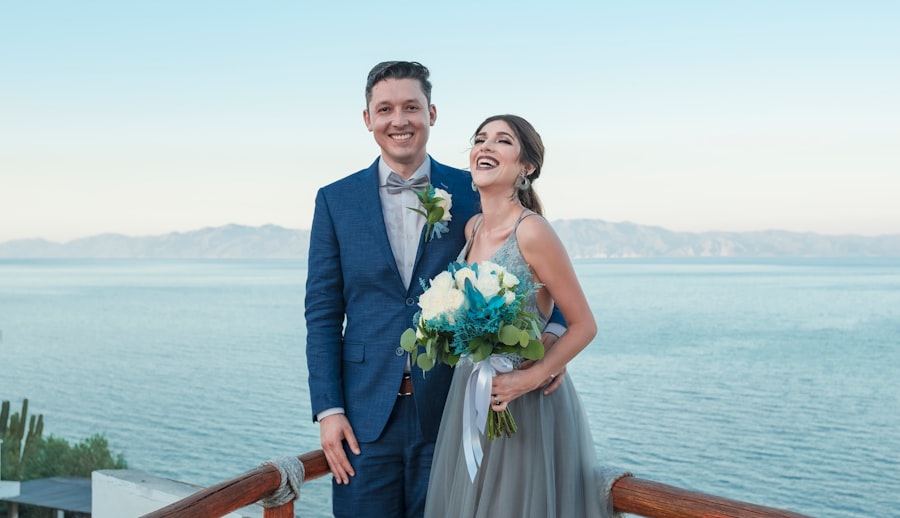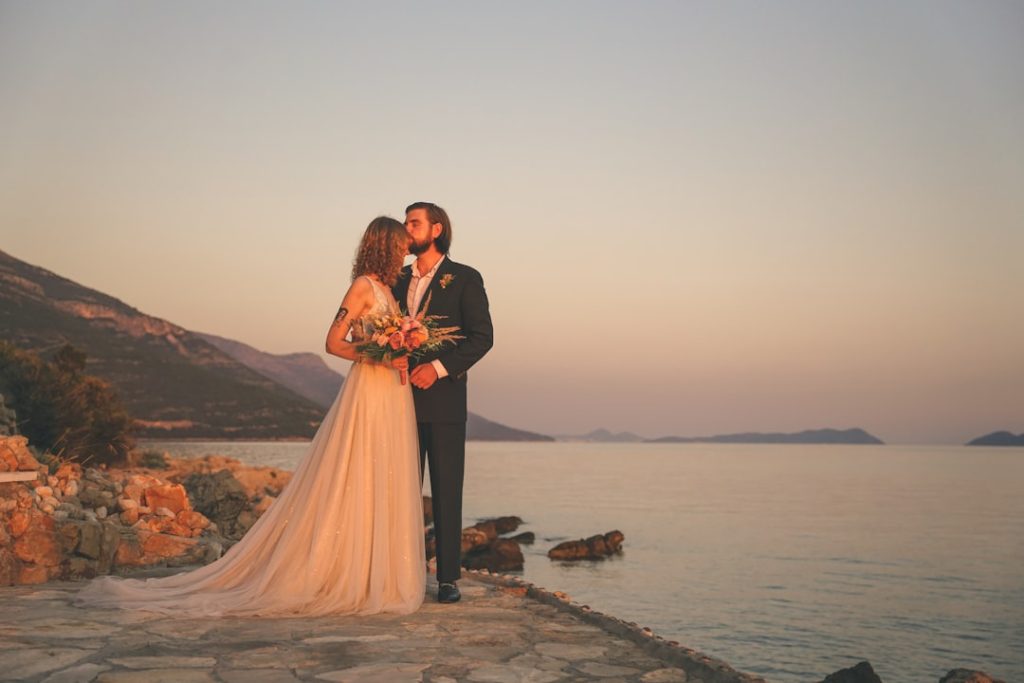When we think about wedding photography, the first thing that often comes to mind is the joy and love shared between the couple. However, the role of natural light in capturing these moments cannot be overstated. Natural light has a unique quality that can transform an ordinary photograph into something truly magical.
It creates a soft, flattering glow that enhances skin tones and adds depth to images. As photographers, we recognize that the right lighting can evoke emotions and set the mood for the entire wedding album. Moreover, natural light is versatile and dynamic, changing throughout the day and offering different qualities at various times.
From the golden hour just before sunset to the soft light of an overcast day, each scenario presents its own opportunities and challenges. By understanding how to harness natural light effectively, we can create stunning images that reflect the beauty of the day and the personalities of the couple. This understanding not only elevates our work but also helps us connect with our clients on a deeper level, as they see their love story captured in its most authentic form.
Key Takeaways
- Natural light is crucial in wedding photography as it creates a soft and flattering effect on the couple and the surroundings.
- The best time of day for natural light is during the golden hour, which occurs during the first and last hour of sunlight.
- Reflectors and diffusers can be used to manipulate and enhance natural light, creating a more flattering and even lighting effect.
- Positioning the couple in relation to the natural light source is important for achieving a flattering and romantic effect in the photos.
- The surrounding environment, such as trees, buildings, or bodies of water, can be used to create interesting and dynamic natural light effects in wedding photos.
Choosing the Right Time of Day for the Best Natural Light
Timing is everything when it comes to capturing beautiful natural light in wedding photography. The golden hour, which occurs shortly after sunrise and just before sunset, is often considered the holy grail of lighting conditions. During this time, the sun casts a warm, golden hue that bathes everything in a soft glow.
We often find ourselves planning key moments of the wedding day around this magical time, ensuring that we can take advantage of this stunning light for portraits and couple shots. However, it’s not just about the golden hour; we also need to consider other times of day. Midday sun can be harsh and unflattering, creating strong shadows and bright highlights.
In these situations, we might seek shaded areas or wait for clouds to diffuse the sunlight. On overcast days, we are gifted with soft, even lighting that can be incredibly flattering for portraits. By being mindful of the time of day and how it affects natural light, we can make informed decisions that enhance our photography and ultimately benefit our clients.
Utilizing Reflectors and Diffusers to Enhance Natural Light

While natural light is a powerful tool in our photography arsenal, we can further enhance it by using reflectors and diffusers. Reflectors are invaluable for bouncing light back onto our subjects, filling in shadows and creating a more balanced exposure. We often carry portable reflectors in various sizes to adapt to different situations.
Whether it’s a large reflector to illuminate a couple during a sunset or a smaller one for close-up shots, these tools allow us to manipulate light creatively. Diffusers, on the other hand, help soften harsh sunlight, creating a more flattering effect on our subjects. When we encounter bright sunlight, we can use a diffuser to create a gentle, even light that wraps around our couple beautifully.
This technique is especially useful during midday when shadows can be particularly harsh. By incorporating reflectors and diffusers into our workflow, we can elevate our images and ensure that our couples look their best in every shot.
Positioning the Couple for Flattering Natural Light
Positioning is crucial when working with natural light in wedding photography. We must consider not only where the light is coming from but also how it interacts with our subjects. One of our primary goals is to find angles that flatter the couple while showcasing the beauty of their surroundings.
We often experiment with different positions to see how the light falls on their faces and bodies, adjusting as necessary to achieve the desired effect. In addition to finding the right angle, we also pay attention to the background and how it complements the couple. A well-chosen backdrop can enhance the overall composition and add depth to our images.
We might position them against a beautiful landscape or architectural feature that catches the light just right. By being intentional about positioning, we can create stunning portraits that not only highlight the couple’s love but also celebrate the beauty of their wedding day.
Using the Surrounding Environment to Enhance Natural Light
The environment plays a significant role in how natural light interacts with our subjects. As photographers, we have an opportunity to use elements in our surroundings to enhance our images further. For instance, trees can provide dappled light that creates a beautiful pattern on our subjects’ faces, while open fields can offer expansive views bathed in golden sunlight.
We often scout locations ahead of time or arrive early on the wedding day to identify spots that will work well with natural light. Additionally, we can use architectural features such as windows or doorways to frame our subjects beautifully. The way light filters through these structures can create stunning effects that add depth and interest to our photographs.
By being aware of our surroundings and how they interact with natural light, we can create compelling compositions that tell a story about the couple’s special day.
Adjusting Camera Settings to Capture Natural Light Effectively

To capture natural light effectively, we must be adept at adjusting our camera settings accordingly. Understanding exposure is key; we often find ourselves balancing aperture, shutter speed, and ISO to achieve the perfect shot. A wide aperture allows more light into the camera, creating a shallow depth of field that beautifully blurs backgrounds while keeping our subjects sharp.
This technique is particularly effective during golden hour when the light is soft and warm. Shutter speed is equally important; we need to ensure it’s fast enough to prevent motion blur while still allowing enough light for a well-exposed image. In low-light situations or during twilight hours, we may need to increase our ISO settings to maintain clarity without introducing too much noise.
By mastering these settings and knowing when to adjust them based on lighting conditions, we can capture stunning images that truly reflect the beauty of natural light.
Editing Techniques to Enhance Natural Light in Post-Production
While capturing natural light effectively is essential during the shoot, post-production editing also plays a crucial role in enhancing those images further. We often use editing software to fine-tune exposure levels, contrast, and color balance to ensure that the final images reflect what we envisioned during the shoot. Subtle adjustments can make a significant difference; for instance, increasing warmth can enhance the golden tones captured during sunset.
Additionally, we may employ techniques such as dodging and burning to selectively lighten or darken areas of an image, drawing attention to specific details or creating depth. This process allows us to emphasize the beauty of natural light while maintaining a natural look. By combining our skills in both shooting and editing, we can create breathtaking images that resonate with couples long after their wedding day has passed.
Tips for Working with Natural Light in Different Weather Conditions
Weather conditions can vary dramatically on a wedding day, presenting both challenges and opportunities for photographers working with natural light. On sunny days, we must be mindful of harsh shadows and bright highlights; seeking shade or using reflectors can help mitigate these issues. Conversely, overcast days provide soft lighting that is often ideal for portraits but may require us to adjust our approach slightly.
In rainy conditions, we can embrace the unique atmosphere created by raindrops and clouds. Using umbrellas or finding covered areas allows us to continue capturing beautiful moments while utilizing the diffused light provided by overcast skies. Snowy landscapes offer another opportunity; the reflective quality of snow can create stunningly bright images even on cloudy days.
By adapting our techniques based on weather conditions, we can ensure that every wedding is beautifully documented regardless of what nature throws our way. In conclusion, understanding and utilizing natural light in wedding photography is an art form that requires skill, creativity, and adaptability. By choosing the right time of day, employing tools like reflectors and diffusers, positioning couples thoughtfully, leveraging environmental elements, adjusting camera settings effectively, enhancing images in post-production, and adapting to various weather conditions, we can create breathtaking photographs that capture the essence of love on one of life’s most significant days.
As photographers dedicated to our craft, we strive to master these techniques so that every couple receives a timeless collection of memories illuminated by beautiful natural light.
